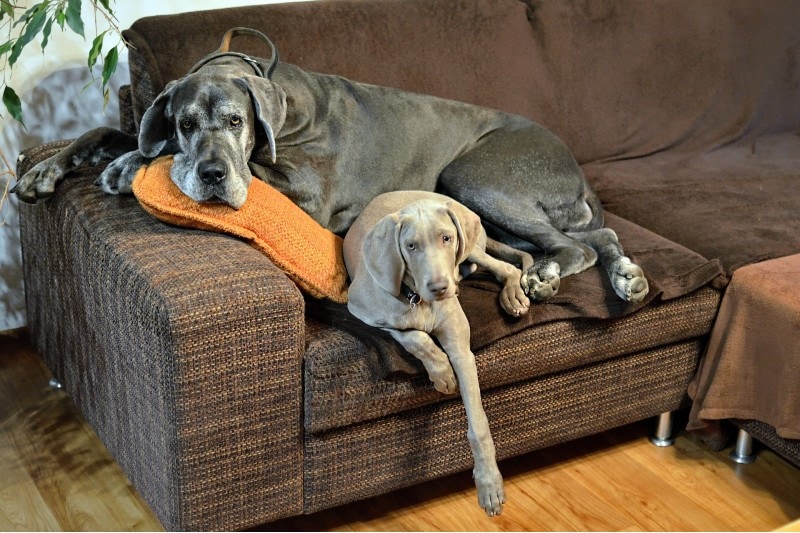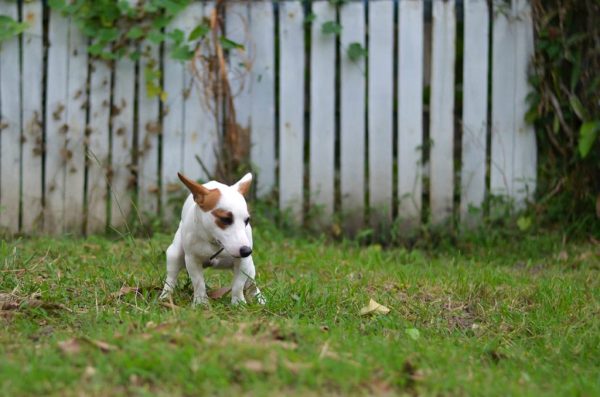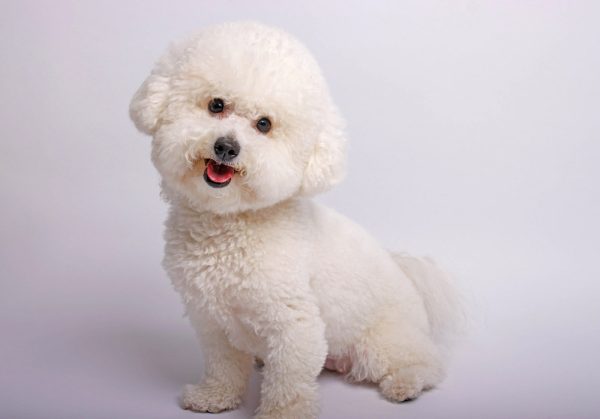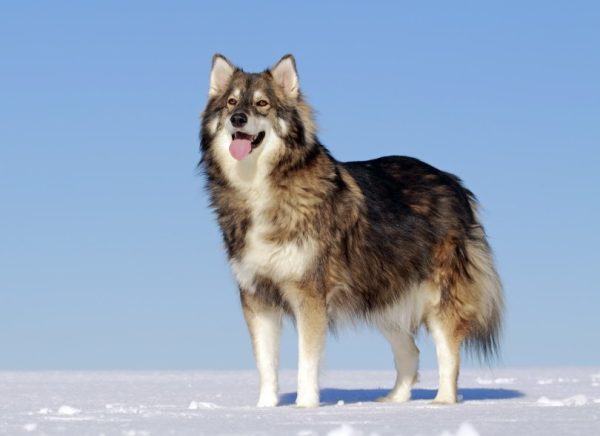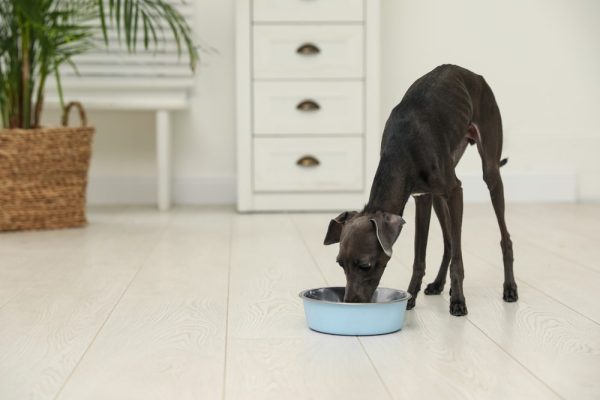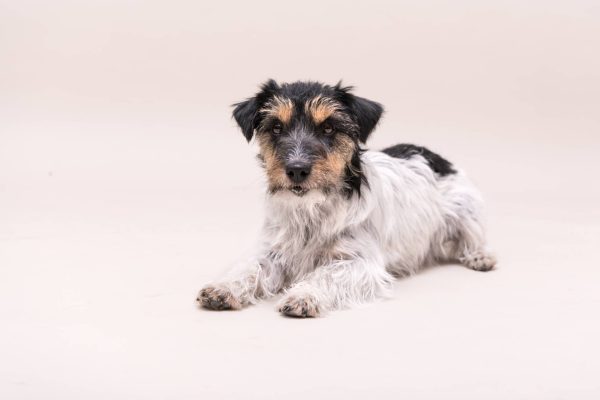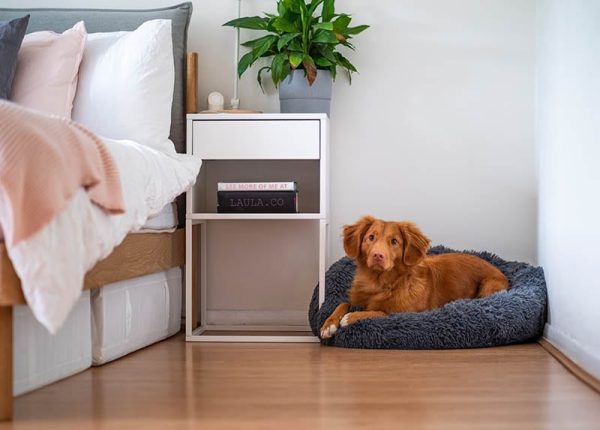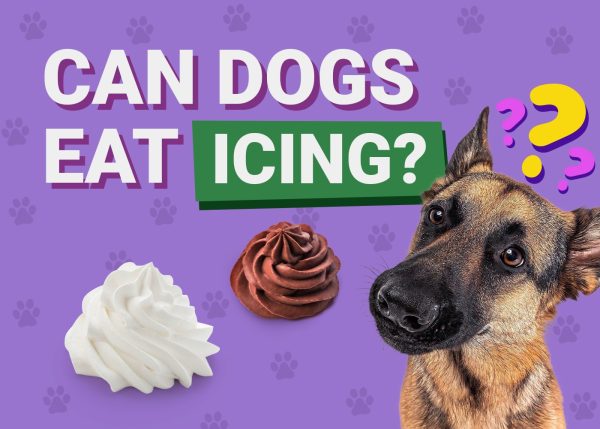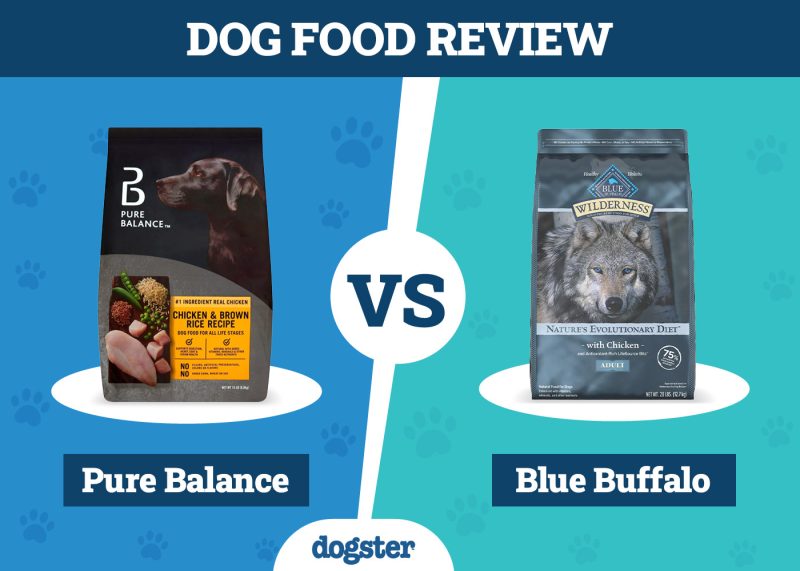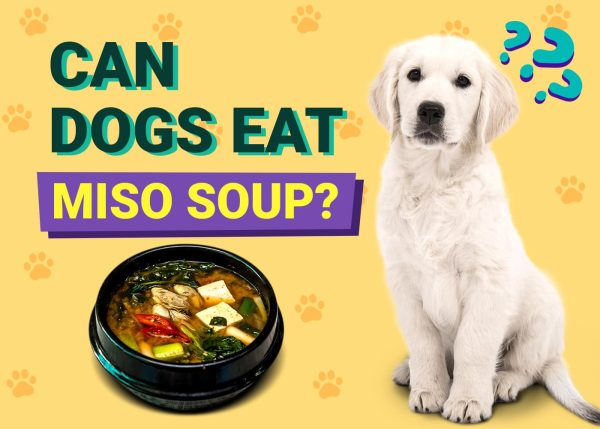In this article
Dogs are similar to children in that one moment, they’re a puppy, then you blink, and they’re all grown up. And like children, dogs will have different nutritional needs to be met as they get older. That means it’s smart to know when to switch a dog from a puppy food to adult food.
In the case of larger dog breeds, you’ll find most recommendations say to switch from puppy to adult food at 12 months of age. However, it’s different in the case of the Great Dane. Though this giant breed tends to grow very quickly, it doesn’t actually mature until much later—around 2 years or so1. This means cartilage and bones are still growing, which requires the nutrients puppy food contains.
So, when can you switch a Great Dane from puppy to adult food? Great Danes should be switched at 18 months of age.

How to Switch a Great Dane from Puppy to Adult Food
Now that you know when to switch your Great Dane puppy to adult food, it is time to learn how to switch foods without having it upset your pup’s stomach. You can’t just put down puppy food one day, and then adult food the next; this is a recipe for gastrointestinal issues. Instead, you’ll need to make the food switch slowly, so your Great Dane has an easier time with the transition.
Do not worry that a slow switch will take forever, though. You can easily switch your dog from puppy to adult food in just four days.
- Day 1: 75% puppy food, 25% adult food
- Day 2: 50% puppy food, 50% adult food
- Day 3: 75% adult food, 25% puppy food
- Day 4: 100% adult food
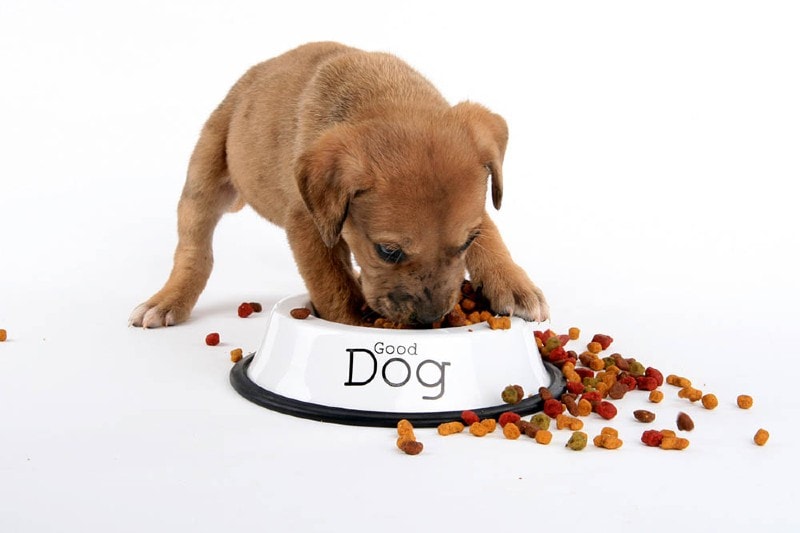
The Dangers of Overfeeding
It can be easy to overfeed a Great Dane, whether they’re a puppy or an adult. However, you need to be very aware of how much you’re feeding your pet, as overfeeding a giant breed dog may not just result in obesity. Too much food for your dog can actually lead to joint diseases, such as osteochondritis or hip and elbow dysplasia as excess food encourages rapid growth, which can negatively impact giant breeds.
To figure out the best amount to feed your Great Dane, check out the bag of dog food for feeding guidelines or speak to a vet about what’s appropriate. Overall, though, Great Danes may generally require 6–10 cups of food a day depending on their current size.
If you need to speak with a vet but can't get to one, head over to PangoVet. It's an online service where you can talk to a vet online and get the personalized advice you need for your pet — all at an affordable price!

The Dangers of Eating Too Quickly
Many dog breeds tend to gobble down their food, and this habit of eating too quickly isn’t as innocuous as one might think. Eating too fast is just one-way bloat (or gastric dilation volvulus) can occur in dogs, and unfortunately, this is one of the biggest killers of Great Danes. There are ways you can reduce the chances of this occurring, though.
First and foremost, use a slow feeder to prevent your pet from eating its food in one gulp. Slow feeders make it harder for your dog to get food out of the bowl, which means it can’t eat nearly as fast as it typically does. These come in a variety of shapes, sizes, and colors, so you shouldn’t have difficulty finding one that works for your Great Dane. Other than eating too quickly, other possible causes of bloat in dogs include:
- Exercising right after eating
- Having a single meal a day
- Stress
So, don’t feed your Great Dane just once a day. Instead, break it down into two or more meals throughout the day, and ensure your pet isn’t going for long runs or engaging in rambunctious play in the backyard for at least an hour after eating. You may also consider a prophylactic procedure (that is frequently done in breeds predisposed to bloat) called gastropexy for your Dane, which involves tacking the stomach to the abdominal wall.


Conclusion
Great Danes grow quickly but don’t fully mature until later, so they shouldn’t be switched from puppy to adult food until they’ve reached 18 months of age. When switching your dog’s food, you should do a slow transition to avoid any stomach upset (which will still only take 4 days or so). You should also take care to avoid overfeeding your Great Dane to reduce the risk of degenerative joint diseases that can occur from eating too much and growing too quickly.
Finally, ensure your dog isn’t eating too fast, no matter what age it is. Eating quickly can cause bloat, which is one of the biggest killers of the Great Dane. You can give your dog its food in a slow feeder to help it eat at a more normal pace and also help prevent bloat by discouraging exercise after a meal and feeding your Great Dane two or more meals a day.
Featured Image Credit: Martin Tajmr, Pixabay
